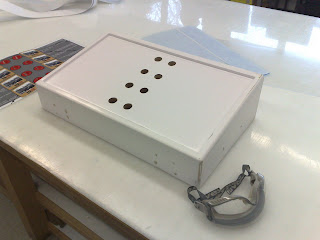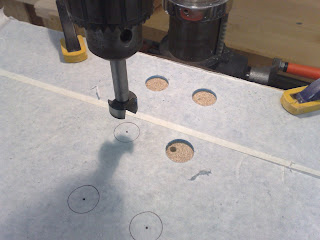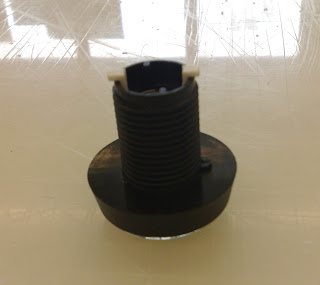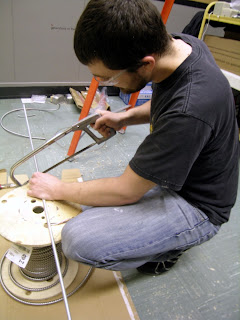Construction of the first video interactive was started today. An existing pedestal was first lightly sanded, then, using a printed mock-up, the hole position was determined for button/switch placement.
 Pedestal with post holes. The box is hollow underneath the button holes and will house the DV-66, controllers and wiring.
Pedestal with post holes. The box is hollow underneath the button holes and will house the DV-66, controllers and wiring. Using a Forstner bit, I cut matching holes into a piece of 1/8" acrylic to cover the final printed text/grapic panel.
Using a Forstner bit, I cut matching holes into a piece of 1/8" acrylic to cover the final printed text/grapic panel. Each switch came equipped with a locking notch, so each corresponding hole was also given a notch using a 1/4" drill bit, thus locking the buttons from turning and twisting the wires.
Each switch came equipped with a locking notch, so each corresponding hole was also given a notch using a 1/4" drill bit, thus locking the buttons from turning and twisting the wires.






 Head in the ceiling! Be extremely careful when working in old structures. I wore a respirator, goggles and long sleeves to ensure that I didn't inhale or come into contact with any dust, insulation or asbestos.
Head in the ceiling! Be extremely careful when working in old structures. I wore a respirator, goggles and long sleeves to ensure that I didn't inhale or come into contact with any dust, insulation or asbestos.












